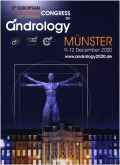- 钛学术文献服务平台 \
- 学术期刊 \
- 医药卫生期刊 \
- 外科学期刊 \
- 亚洲男性学杂志(英文版)期刊 \
null
Comparative study on density gradients and swim-up preparation techniques utilizing neat and cryopreserved spermatozoa
基本信息来源于合作网站,原文需代理用户跳转至来源网站获取
摘要:
Aim: To 1) compare post-wash and post-thaw parameters of sperm processed with PureSperm density gradient technique and swim-up method; and 2) test the efficacy of two commonly available density gradient media PureSperm and Isolate. Methods: This prospective study used semen specimens from 22 patients. Specimens from nine patients were processed by both PureSperm density gradient and swim-up method. These specimens were then cryopreserved.Thirteen specimens were processed by both PureSperm (40 % and 80 %) and Isolate (50 % and 90 %) double density gradient techniques. The two fractions processed by both PureSperm and swim-up were analyzed for post-wash sperm characteristics. Post-thaw analysis was done after 24 hours. Sperm fractions obtained after processing with PureSperm and Isolate were compared for post-wash sperm characteristics and ROS levels. Results: Specimens prepared with PureSperm had significantly higher median total motile sperm counts (TMSC) (32.2 × 106 vs.17.6 × 106), recovery rates (69.2 % vs. 50.0 %), and longevity at 4 hours (83.0 % vs. 55.0 %) compared to specimen prepared by swim-up. Post-thaw specimens also had a higher recovery and longevity at 4 hours with PureSperm as compared to the swim-up. Semen specimens processed by PureSperm had significantly higher total sperm count,TMSC, and percentage recovery rates (30.0 % vs. 19.7 %) than Isolate. Conclusion: Semen quality is better preserved in fresh and cryopreserved semen prepared with PureSperm density gradient compared to swim-up. A significant enrichment of sperm is observed with PureSperm compared to Isolate. Higher recovery rates of mature motile sperm obtained after PureSperm sperm preparation may be beneficial for successful ART.

推荐文章
期刊_丙丁烷TDLAS测量系统的吸收峰自动检测
带间级联激光器
调谐半导体激光吸收光谱
雾剂检漏 中红外吸收峰 洛伦兹光谱线型
不同盐度、温度及光照对漂浮浒苔生理生态的影响
浒苔
盐度
温度
光照
生理生态
期刊_联合空间信息的改进低秩稀疏矩阵分解的高光谱异常目标检测
高光谱图像
异常目标检测 低秩稀疏矩阵分解 稀疏矩阵 残差矩阵
内容分析
关键词云
关键词热度
相关文献总数
(/次)
(/年)
文献信息
| 篇名 | Comparative study on density gradients and swim-up preparation techniques utilizing neat and cryopreserved spermatozoa | ||
| 来源期刊 | 亚洲男性学杂志(英文版) | 学科 | |
| 关键词 | |||
| 年,卷(期) | 2005,(1) | 所属期刊栏目 | |
| 研究方向 | 页码范围 | 86-92 | |
| 页数 | 7页 | 分类号 | |
| 字数 | 语种 | 英文 | |
| DOI | |||
五维指标
引文网络
引文网络
二级参考文献 (0)
共引文献 (0)
参考文献 (17)
节点文献
引证文献 (0)
同被引文献 (0)
二级引证文献 (0)
1900(3)
- 参考文献(3)
- 二级参考文献(0)
1983(1)
- 参考文献(1)
- 二级参考文献(0)
1992(1)
- 参考文献(1)
- 二级参考文献(0)
1994(1)
- 参考文献(1)
- 二级参考文献(0)
1996(2)
- 参考文献(2)
- 二级参考文献(0)
1997(1)
- 参考文献(1)
- 二级参考文献(0)
1998(2)
- 参考文献(2)
- 二级参考文献(0)
1999(3)
- 参考文献(3)
- 二级参考文献(0)
2000(1)
- 参考文献(1)
- 二级参考文献(0)
2001(1)
- 参考文献(1)
- 二级参考文献(0)
2004(1)
- 参考文献(1)
- 二级参考文献(0)
2005(0)
- 参考文献(0)
- 二级参考文献(0)
- 引证文献(0)
- 二级引证文献(0)
引文网络交叉学科
相关学者/机构
期刊影响力
亚洲男性学杂志(英文版)
主办单位:
中国科学院上海药物研究所
出版周期:
双月刊
ISSN:
1008-682X
CN:
31-1795/R
开本:
大16开
出版地:
上海市太原路294号16号楼302室
邮发代号:
4-648
创刊时间:
1999
语种:
eng
出版文献量(篇)
2771
总下载数(次)
1
总被引数(次)
9935
期刊文献
相关文献
推荐文献
- 期刊分类
- 期刊(年)
- 期刊(期)
- 期刊推荐
亚洲男性学杂志(英文版)2022
亚洲男性学杂志(英文版)2021
亚洲男性学杂志(英文版)2020
亚洲男性学杂志(英文版)2019
亚洲男性学杂志(英文版)2018
亚洲男性学杂志(英文版)2017
亚洲男性学杂志(英文版)2016
亚洲男性学杂志(英文版)2015
亚洲男性学杂志(英文版)2014
亚洲男性学杂志(英文版)2013
亚洲男性学杂志(英文版)2012
亚洲男性学杂志(英文版)2011
亚洲男性学杂志(英文版)2010
亚洲男性学杂志(英文版)2009
亚洲男性学杂志(英文版)2008
亚洲男性学杂志(英文版)2007
亚洲男性学杂志(英文版)2006
亚洲男性学杂志(英文版)2005
亚洲男性学杂志(英文版)2004
亚洲男性学杂志(英文版)2003
亚洲男性学杂志(英文版)2002
亚洲男性学杂志(英文版)2001

 免费查重
免费查重










